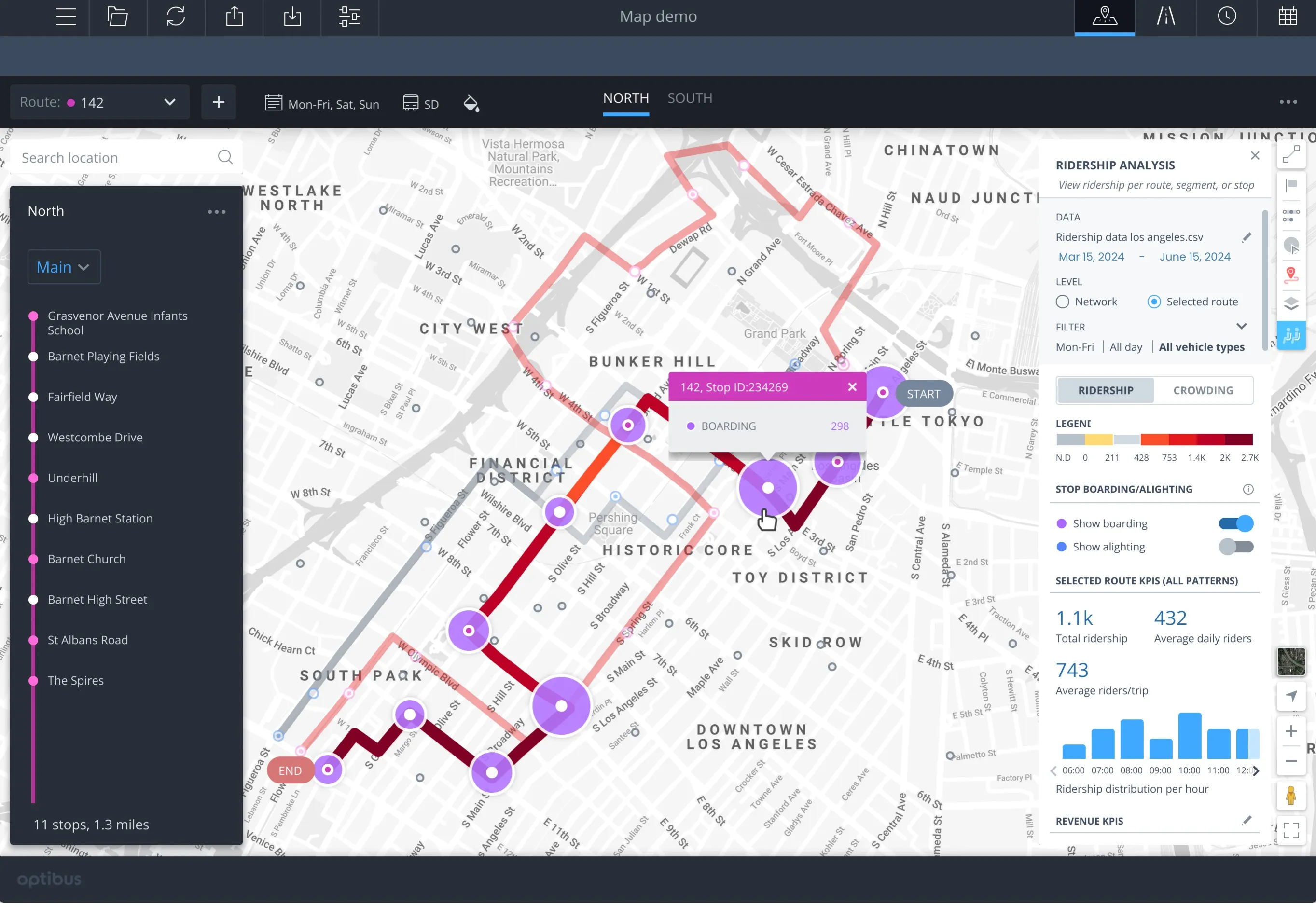
Optibus has launched Strategic Planning, a solution that enables public transportation agencies and consultancies to create passenger-centric services while, the firm says, achieving operational, financial and environmental goals.
The Strategic Planning suite unites multiple layers of key data with machine learning and visualisation tools for a comprehensive view of network efficiency, accessibility, cost and performance.
Public transportation agencies face the difficulty of balancing resources with passenger demand and regulations, leading to challenges such as matching vehicle capacity and frequency to ridership. Services must meet passenger demand and avoid both overcrowding or empty buses.
There is the challenge of attaining better accessibility for all. Connectivity to key destinations must be improved, including underserved communities and car-less households.
Importantly, the services must adapt to change, such as route disruptions as well as navigating long-term trends.
Meanwhile, cost and operational transparency is always a challenge, Optibus says. Agencies must identify opportunities to maximise revenue and reduce costs while aligning resources with service needs.
Optibus says that Strategic Planning addresses these challenges by centralising essential data and leveraging advanced optimisation and visualisation tools. This creates insights that optimise both passenger experience and operational efficiency.
Transport for Wales in the UK and the Jacksonville Transportation Authority in the US state of Florida are among the first to have access to Optibus’ emerging tools.
“Network planning is both an art and a science,” said Amos Haggiag, chief executive and co-founder of Optibus. “Strategic Planning gives planners the ultimate technology toolkit for building more efficient and equitable transit networks, fulfilling the needs of passengers, cities and the environment.”










